You are here
Tour to holiday Nowruz to Ashgabad.
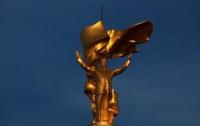
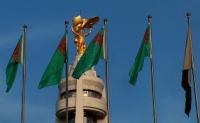
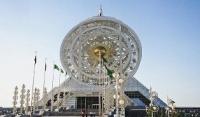

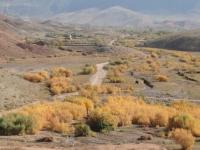

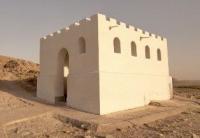
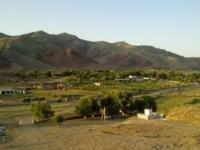
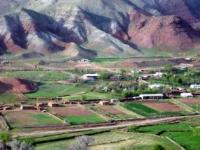
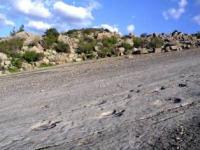
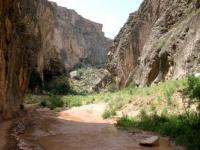
Tours for holidays of Turkmenistan.
The short description of route of tour during holiday Nowruz in Ashgabad and trip to reserve Koytendag:
Ashgabat - gas crater Darwaza - historical and cultural memorial estate "Old Urgench" - historical and cultural reserve Ancient Merv - Ashgabad.
Distance route: 876 km.
Season: from 1 of April to 30 of September.
The best time for an excursion: April, May, September
Duration: 7 days and 6 nights.
The detailed program of tour day by day from Ashgabad to cities Dashoguz and Mary:
Visit of holiday Nowruz in Turkmenistan.
Day 1. Excursion on Ashgabad (34 km).
Arrival at 7:00 in Ashgabad. A meeting at the airport. Transfer to hotel, accommodation. Short rest, breakfast. Beginning of an excursion at 9:00.
Visit of the park of Independence. One of the main touristic attractions of Turkmenistan is the National Independence Park in Ashgabat. Today covers an area of 7 hectares. Laid in 1887 and initially called the city summer garden. Founded in 1890 as Officer Park, in the park was located building of Nobility Assembly of Russian Empire. In the USSR was called Lenin Park, and the people was called First Park.
Visit of Arch of the Neutrality. At 63 meters, there is a 12-meter sculpture of Saparmurat Turkmenbashi on a background of a fluttering flag. This part of the monument rotates slowly, making one full every day. The President thus seems to survey his country, meeting and seeing off the sun the Arch of Neutrality reaches a total of 75 meters, making it the highest building in Turkmenistan, above the 600 year old Kutlug-Timur minaret.
Walk on observation whell in the park Alem. Cultural entertainment center Alem is located in Ashgabat. The general height of a construction - 95 meters with a spike, represents a step pyramid on which the big wheel with a diameter of external circle of 57 meters towers. This largest big wheel of the closed type in the world, is included in the Guinness Book of Records. In total in the building of the center of 6 levels, on 7 meters of each, including 2 underground. The total area of the center - about 26 thousand square meters.
Visit of the Wedding palace. Bagt Koshg wedding palace opened in 2011. Eleven-floor building more than 38 000 square meters. Represents a three-stage construction which each party has an appearance of an eight-pointed star. The cube towering on big columns forms its top step and incorporates a sphere with a diameter of 32 meters – the symbolical planet Earth with the image of the map of Turkmenistan.
Visit to Ertogrulgaza mosque. Ertogrulgaza mosque or Azadi Mosque one of the most beautiful mosques of Ashgabat built in the Turkish style is the biggest in the city.The mosque contains four minarets. In 1998 one of the most beautiful buildings of our world. It was constructed soon after declaration of the state of Turkmenistan independent and became one more symbol of its freedom. Gilded words from the Koran are entered manually. In the mosque which is considered as the house of God, the first floor is the men's hall, and the second - women's. In halls about 5 000 people can pray at the same time.
Trip to mosque and the mausoleum of the Turkmenbashi Rukhy in the settlement of Kipchak (17 km). Huge snow-white mosque with four minarets and the huge gold dome, in the ancestral village of former Turkmen President Saparmurat Niyazov, Kipchak. The mosque was named "Turkmenbashi Ruhi", which is Turkmen for "spirit of Turkmenbashi”. Rukh Turkmenbashi is not the biggest mosque only in Turkmenistan, but also throughout Central Asia. After the end of an excursion return to Ashgabad. Transfer to the railway station. Accommodation in a 4-seater compartment of the train. Transfer to city of Turkmenbashi. Dinner and overnight.
Day 2. Ashgabad - Sunday market - gas crater Darwaza (552 km).
Breakfast. After breakfast at 10:00 visit of the Sunday market (Second-hand market). East market of Altyn-Asar known in the people as Second-hand market. It is located on the northern suburb of the city. It is the biggest market under the open sky in Central Asia. Tolkuchka - is a colorful and bustling bazaar, which is very popular among residents of Ashgabat. Here you can find everything, ranging from food to traditional national dress. Tolkuchka also famous for a variety of traditional Turkmen carpets, which are brought here from all over the country. Tekinski carpets are the most widespread and famous of all Turkmen carpets. After visit of the Sunday market a trip on gas crater of Darwazа.
Departure from Ashgabad. Transfer: Ashgabad - settlement Bakhordok - kishlak Erbent (165 km). On road for Ashgabad the great and boundless desert of Turkmenistan – Kara-Kum begins, infinite barchans and mountains of sand will accompany on travel on desert of Turkmenistan. Arrival in kishlak Erbent.
In a kishlak there live local residents who grow up sheeps and camels. Here it is possible to get acquainted with a life of Turkmen nomads. For the summer they leave for desert and there among sand their sheeps and camels are grazed. Visiting of houses of local residents. Walk on settlement Erbent.
Transfer: kishlak Erbent - Turquoise lake in a crater (85 km). Following local sights in desert Karakum, it is a crater filled by water which has a shade of turquoise. The crater is near to road. Walk to a crater, photographing of vicinities. The Turquoise lake (crater) is in the southernmost tip of saline hollow Unguz, in the western part of the Kara Kum Desert, in Ahal Region. It is a unique sight in the Kara Kum Desert. In 500 meters in the northeast of a crater there are a hillock Kyzyldorgul 129 meters above sea level.
In east part of the Turquoise lake, in 4 kilometers, there is Chaarli valley. Depth of a crater is, about, 15 meters. A crater of the turquoise having the amazing shade filled with water and which received the name - the Turquoise lake.
Further transfer: Turquoise lake – Darvaza Mud crater (15 km). A stop at a crater, walk in vicinities, survey and and photographing of the Mud crater. The Mud crater Darvaza is in the valley of Darwaz, in a northern part of Akhalsky the velayat, to the south of the settlement of Darwaz. From West side at distance of 4 kilometers the Darvazinsky mud crater is adjoined by the valley Odolanshor. The crater has the failure form, it is a unique sight in the Kara Kum Desert. Depth of a crater is, about, 15 meters. At the bottom of a crater - the bubbling liquid dirt of light gray color.
The further transfer: Darvaza Mud crater - valley Darvaza - gas crater Darvaza (11 km). We pass yurts Turkmen nomads at road and soon we leave asphalt road and we turn off to the right on road which leaves in sand. Arrival on gas crater Darvaza, this unique technogenic show in sand of Kara-Kum which we shall observe, in a crater burns gas since 1971.
Walks in vicinities. In a southeast part from gas of a crater of Darwaz there is a hill Kyzylchulba 124 meters high above sea level. The hill in 600 meters from a gas crater of Darwaz is located, from it in evening and night time the surprising and unique view of a crater Darwaz opens. Evening photofilming of a crater. Dinner and overnight in tents.
Day 3. Ashgabad - historical and cultural memorial estate "Old Urgench" (214 km).
Breakfast. Transfer to airport, at 8.30. flight to Dashoguz (50 min.). Arrival in Dashoguz, meeting at airport. Transfer: airport - Dashoguz - city of Urgench - historical and cultural memorial estate "Old Urgench" (107 km).
Arrival on historical and cultural memorial estate "Old Urgench". Beginning of an excursion.
Visit of mosque Matkerim ishan. Visit of madrasah Dash. In ancient Kunya-Urgench, in 80 meters to the east of Nadzhmeddin Kubra mausoleum there is a madrasah of Dashmechet. The building is built in 1907 - 1908 for Mahomed-Amin at the expense of the treasury of the Khivan khan as madrasah including the room of the mosque.
Visit of mausoleum Sultan Ali (XVIth century). The mausoleum Sultan Ali (the XVIth century) is opposite to Nadzhmetdin mausoleum Kubra is scarlet. Two mausoleums form uniform ensemble Kosh. Sultan Ali governed Gurgandzhem in the 16th century. Many scientists believe that on composition, planning and a number of details this mausoleum is the smaller copy of the mausoleum Tyurabeg Hanum.
Visit of mausoleum of Piryar Valyi. In the legends which are carefully stored and transferred from generation to generation people connect this mausoleum with a name of Piryara Vali, father of the master of national fight and the talented poet Pakhlavan Mahmoud Kitali (Pakhlavan-at) glorified to all Khorezm. He was born on the way on the way from Urgench to Khiva. Later the family came back, however whether Piryar Vali came back home on "the homeland of ancestors" it is unknown because burial whose name called the mausoleum, is not found.
Visit of mausoleums of Nadzhmetdin Kubra. The Mausoleum of Shaykh Najm al-Din Kubra (1145 - 1221) is located in the ancient cemetery adjacent to the, modern city center of Kunya Urgench. Built by Qutlugh Timur (1321 - 1333), the governor of Khorezm, the mausoleum is named after Najm al-Din Kubra al Khorezmi, the Muslim philosopher who founded the Kubrawiyyah Sufi order.
Visit of mausoleum Tyurabek khanum. Tyurabek- khanym Mausoleum, dated to the middle of XIV century and belonging to the time of the governing of Sufi Dynasty in the Old Urgench, is the real pearl of Khorezm and whole Turkmen агсhitecture. The high and light 6-faceted hall of about 100 sq. m is the peculiarity of this creature. Its walls are decorated with coloured mosaic.
Visit of minaret of Kutlug Timur. For unknown reasons, construction was interrupted for a very long time, and was completed only in 1321-1336, in the time of Kutlug-Timur (the vice-regent of the Golden Horde). This 62m tower was named after him; and is the tallest minaret in Central Asia. It is well-proportioned and tapers upwards along toward the peak (diameter at base is 12 meters; at the top - 2m). The "trunk" is divided by narrow belts of vertically stacked bricks, which create specific architectural rhythms and are inlaid with wide bands of Arabic inscriptions.
Visit of mosque mausoleum Seyit Akhmed. Visit of fortress Kyrk Mola. Fortress Kyrk Mola (the 40th mullahs), is located on the northeast suburb of Kunya-Urgench - near Khorezm Shakh Tekesh mausoleum Dashoguz Region. The area of fortress is 3 hectares. Maximum height of towers of 12,5 meters. During excavation by archeologists the fortification of the antique period, and also an altar was found. Fortress is the most ancient center of Gurgandzha. Scientists believe that during the Middle Ages era there was the well-known library of Mamun here.
Visit of mausoleum of Sultan Tekesh. The mausoleum of Anushtigid ruler Tekesh (1172 - 1200) stands near the Fakhr al-Din al-Razi mausoleum and Kutlug Timur minaret, in Kunya Urgench (or Gurganj), the dynastic capital of the Khwarazm Shahs (1077 - 1231). Also referred to as the Gokgumbaz (blue cupola) or the Sheikh Sherip Baba mausoleum by the local populace, this mausoleum's construction date and patron have not been established. An elaborate specimen of Khorezm pyramidal-roof-atop-brick-cube funerary typology, the structure draws influences from both the Seljuk tomb tower and domed square mausoleum typologies.
Further visit of mosque mausoleum Il Arslan. The mausoleum of a Khorezm Shakh of Il-Arslan called also by Fakhred-dina Razi mausoleum - other well-known building of the cultural and historical reserve Old Kunya-Urgench. One of the first monumental structures of Central Asia built in the second half of the XIIth century. Known also the magnificent relief ornament of the main facade which is cut out on a terracotta and a unique tent with 12 sides. Fakhreddin Razi was scientist-theologian.
On the way to Mamun minaret visit of gate of a caravanserai. Mamun minaret is a part to the Mongolian Urgench, is located in a northern part of Dash Gala, near the mausoleum Il-Arslana. Ruins of a minaret were found as a result of excavation thanks to which it became known that completely the minaret collapsed only hundred years ago. In 1900 locals found a mortgage lead tile with the inscription narrating that the minaret was constructed in 1011 by order of the shah Mamuna.
Visit of fortress of Ak kala (XVIth century). The fortress was named Ak-Kala after its population had abandoned it. With the retreat of water the whole oasis dried up and turned into a desert.
End of an excursion. Transfer: Kunya-Urgench - city of Dashoguz - airport (107 km). Arrival in airport, flight to Ashgabad (45 min.). Arrival in Ashgabad, meeting at the airport. Transfer to hotel, dinner, overnight.
Day 4. Ashgabad. Visiting of festive events on Navruz holiday.
Breakfast. After breakfast visit of the festive actions devoted to the holiday Nowruz in the city. A traditional national lunch at national restaurant. After lunch trip to the ancient settlement Nisa (29 km). Walk on the ancient settlement and vicinities.
The Parthian Fortresses of Nisa consist of two tells of Old and New Nisa, indicating the site of one of the earliest and most important cities of the Parthian Empire, a major power from the mid IIIrd century BC to the 3rd century AD. They conserve the unexcavated remains of an ancient civilization which skilfully combined its own traditional cultural elements with those of the Hellenistic and Roman west.
At 18:00 return to city. Short rest. At 19 o'clock the beginning of walk on the evening city in which reigns the holiday Nowruz. Dinner. At 21:30 return to hotel, overnight.
Day 5. Ashgabad - Mary - historical and cultural reserve Ancient Merv (71 km).
Breakfast. Early transfer to the airport. At 8:00 departure to the city of Mary (40 minutes of flight). Arrival in city airport of Mary, meeting at the airport. Transfer: airport - town Bayramali (29 km). Visit of the historical and cultural reserve Ancient Merv.
Visit to the ancient settlement Abdullah khan Kala (XVth century). The mausoleum of Abdullah ibn Burayda is located in the Vekil Bazaar area of the Merv oasis. The structure was built towards the end of the eleventh century under Seljuk rule. It was recently restored in 1990, which fashioned its surrounding area as a namazgah. While the restoration has been faithful to the original style of its interior, the exterior has been largely altered. Older drawings indicate that the new dome raised on a new drum stands about two meters taller than the original structure.
Transfer to mausoleums Askhabov (6 km). Askhabs associates of prophet Mohammed were called - Bureid ibn Al-Khuseib al-Aslami and Al-Khakim ibn Amr Al-Gifari. After death, places of their burial places were local sanctuaries around of which in XV century representatives of dynasty Timurids have constructed a religious complex. Their tombs from a black marble are decorated by a relief groove with vegetative ornaments and inscriptions. Behind tombs two cost restored aivans.
Transfer to ruins of fortresses Big and Small Gyz kala (2 km). Visit of ruins of fortress Small Gyz Kala. Fortress ruins Small Kyz kala, in the historical and cultural park ancient Merv is one of ancient and historical sights of Mary Region. Approximate age of construction VI - VII century. Uniqueness of a construction in corrugated walls from not burned brick. Small Kyz kala small fortress badly remained up to now. The architecture of walls Small Kyz kala of a calla, most likely too reminded a goffering which is formed by the linked semicircular or polygonal pilasters.
Visit of ruins of fortress Big Gyz kala. Big Kyz kala - small fortress, badly remained up to now. Big Kyz kala consisted of two floors. The first floor had five rooms, and the ladder conducting down passed through an arc-shaped corridor. Planning of the second floor can only be imagined by the remained fragments. The second floor also had about five rooms located around the courtyard. Big Kyz kala with corrugated, as if put pleated, like an accordion, walls. They are put on earth ramps with an easy inclination. Small windows are hidden pleated walls.
Transfer and visit of the mosque of Kyz Bibi (600 meters). Visit of the medieval town Sultan-Kala. The ruins of Merv are comprised of five walled cities dating from the VIth century BC to the XVIIIth century, known as Erk Kala, Gyaur Kala, Sultan Kala, Abdullah Khan Kala and Bairam Ali Khan Kala, grouped into three settlements corresponding to three periods, the ancient, medieval and post-medieval Merv. What would later become a major medieval city, and whose ruins are now known as the Sultan Kala, initially arose as a suburb beside the Majan canal outside the fortified ancient city (the ruins now known as Gyaur Kala) sometime before the eighth century.
Visit Sultan Sanjar mausoleum. Gaunt and huge in the middle of Sultan Kala is the Sultan Sanjar mausoleum, completed in 1140 as Moscow was being born. Its other dome, 38 metres high and originally clad in blue tiles, was said to be visible a day’s march away. A second inner dome appears to be supported by a lattice of brick ribs but these are probably only decorative.
Transfer and visit of citadel Shakhriar Ark (800 m).
Transfer and visit of a minaret and Hoji Yusup mosque (800 m).
Transfer and visit of the mosque Beni Mahan (3 km).
Visit of the ancient settlement Erk kala.
Hill Erk kala settles down considerably to the south Yaz depe, adjoining with medieval Old Merv. In VI - IV c.c. Up to B.C., in days of domination of the Persian tsars, the strengthened city borrowed the area in 12 hectares here settled down. He has been enclosed thick - 6,5 m in the basis - by a fortification. Excavation have found out to Erk kala the layers concerning by times of tsar Dariya and Alexander the Great.
Visit of the ancient settlement Gyaur kala. The end of an excursion across Ancient Merv. Transfer: Ancient Merv - town Bayramali - airport of Mary (29 km). Arrival in the airport, departure to Ashgabad (40 minutes). Arrival in Ashgabad, meeting at the airport, transfer to hotel, dinner and overnight.
6 Day. Ashgabad.
Transfer to airport. Departure from Ashgabad.
Addition to the main tour: "Visit to of town Turkmenbashi, Caspian Sea and canyon Yangikala". Days 2.
I option.
Day 1. Ashgabad - town Turkmenbashi - Yangikala canyon (276 km).
Transfer to the airport, morning departure to the town Turkmenbashi. Arrival in Turkmenbashi, meeting at the airport. Transfer: airport - settlement Akdash - Yangikala canyon (182 km). On the way visit of an exotic and picturesque market in the town Balkanabad. On the way to Yangikala canyon we pass near mountains of the Western Turkmenistan - Small and Big Balkhan. Big and Small Balkhan - ridges in the west of Turkmenistan, near the Caspian Sea, the mountains extended from the West on the East on 60 kilometers, width - 20 kilometers.
The highest point - the mountain Arlan of 1880 meters above sea level. In a mountain landscape ridges, deserts, and mountain steppes dominate. Near Big Balkhan ridge there is an oil field - Nebit Dag. Lunch on the way. Arrival in canyon. An excursion in Yangikala canyon to volcanic and rocky formations of the valley Kemal-ata. Yangi-Kala canyon ("fiery fortresses"). Yangikala canyon is in Balkan Region, in 160 kilometers to the East from the town of Turkmenbashy. Locals call this massif Kyzyldag (Red mountains). Steep breaks white, yellow, ochre, purple and red colors, fancifully cut out by winds and rains, are very similar to stone locks.
Canyons at sunset when everything is painted in bright-red color around are especially beautiful. Once the bottom of canyons was a bottom of the ancient sea. Then sea water receded, and on a surface hills and breaks, similar to plateaux, seemed. In the main canyon of Yangikala the small canyon Kemal ata punched in rocks by the stream which appeared in the middle of the desert which laid itself (himself) way from a spring is especially interesting. From this spring sheep and camel herds satisfy thirst. Ornament Kemal - Ata is stone educations, many of which are on canyon slopes.
Transfer: Yangikala canyon - Gozli ata mausoleum (50 km). Visit of the mausoleum of Gozli ata. Gozli ata the mausoleum is in Balkan Region in the west of Turkmenistan. Gozli ata mausoleum is located in 157 kilometers from the Turkmenbashi. Gozli ata the most remote place of a pilgrimage in Turkmenistan. The mausoleum is in the picturesque place, surrounded with pink, greenish, reddish mountains of a surprising form and beauty. On these lands the Turkmen soldiers from troops of the Khivan khan, for the independence courageously defended.
Transfer: Gozli ata mausoleum - town Turkmenbashi - resort of Avaza (161 km). Arrival to the resort of Avaza. Transfer to hotel, accommodation, dinner, overnight.
Day 2. Turkmenbashi - resort of Avaza - Ashgabad (276 km).
Breakfast. Walk in the vicinities of the resort of Avaza. The sea resort of Avaz is located in 17 kilometers to the West from the downtown on the southeast coast of the Caspian Sea on the cape Yangiaul. Trip to the town of the Turkmenbashi (17 km). An excursion and walk on the town. Visit of Russian Orthodox Church. Walk on seaside market, visit of the sea harbor. The town is the center of oil-processing industry of Turkmenistan.
The city began the history with 1716 when the prince Bekovich-Cherkasskiy founded strengthening on the coast of the Krasnovodsk gulf ("in the mouth Uzboya"), preparing a campaign to Khiva. After construction of the Zakaspiyskiy railroad from Krasnovodsk via the ferry in Baku, at the end of XIX - the beginning of the XXth centuries, the town turned into the important transport center. In 1993 Krasnovodsk was renamed by the president Saparmurat Niyazov (Turkmenbashi) into the city - the Turkmenbashi.
The developing sea resort of Avaz is located in 17 kilometers to the West from the downtown. In the neighborhood of the town of the Turkmenbashi there took place shootings of the Soviet feature films "Days of an Eclipse" of Alexander Sokurov, "Forty first" Grigory Chukhraya. Lunch at restaurant. End of an excursion transfer to the airport, departure to Ashgabad (40 min.). Arrival in Ashgabad, meeting at the airport, transfer to the city. End of service.
Addition to the main tour: ""Traces of dinosaurs and cave of Kugitang mountains". 4 days.
II option.
Day 1. Ashgabad - town of Türkmenabad - settlement Koytyn (374 km).
Transfer to the airport, departure morning flight to Türkmenabad (1 hour). Arrival in the Türkmenabad airport, meeting at the airport. Transfer: Türkmenabad - settlement of Sayat - settlement of Halach - architectural complex of Astana baba (200 km). Arrival on the Astana baba complex (the XII - XIX century). Visit and photography of an architectural complex and vicinities. The Mausoleum of Astan-Baba is unique structure in its type, built in the area of the Medieval Zemm, north-west from Kerki. It has been rebuilt many times in the course of the centures. Kerki is an administrative centre forming part of Lebap velayat. It's a town with a population of 20.000. The city differs from others with its' XIX c architecture. Kerki is rich in archaeological monuments. Lunch on the way.
Transfer: Astana baba complex - settlement of Kotendag - settlement of Karlyuk - Gurshun magdanly (The lead mine) - settlement of Koytyn (174 km). Arrival in the settlement of Koytyn (Chilon-ata). Transfer to guest house, accommodation, dinner. The settlement of Koytyn is on the suburb of southeast part of Turkmenistan in Mountains Kugitangtau. In the settlement of Koytyn there is grove of trees of an unabi (the Chinese date, zizifus) of 0,75 hectares.
Trees have an inclination in one party, age of some trees more than 200 years. Nearby there is pistachio grove of 1500 hectares age of 200 - 250, thickness of trees about 1 meter. Evening walk on the lake Kyotte-Kel. The deepest in Turkmenistan, 59 meters. The lake is on the suburb of the settlement of Koytyn, in the western part at the height of 737 meters above sea level. From North side of the lake it is filled with rain and snow waters. Length of the lake is 466 meters, width is 380 meters.
Coast are put from clay and loam. The lake Kyotte-Kel covers the area of 25 hectares. At water of the lake there are many minerals and locals consider it medical. Elders of the village call the lake "Dead". Return to the guest house, overnight.
Day 2. Natural reserve Koitendag (40 km).
Breakfast. Transfer to the reserve Koitendag which is on border with Uzbekistan in Mountains Koitendag (earlier these mountains were called Kugitang). Mountains are located in the extreme southeast of Turkmenistan, the western slope of Ridge Kugitangtau in the southwest of the Gissar Range of the Pamir-Alay mountain system. Mount Kugitangtau are located in the Koytendag etrap, Lebap Region the southern slope includes Kugitangtau of the ridge and mountain part from the river Kugitang Darya to the Amu Darya River. The highest point of Mountains Kugitangtau peak Ayry baba 3137 meters above sea level. The reserve is in the ridges Baysuntau and Kugitang. Our way lies in the vicinity of the mountain Ayry baba.
Transfer: settlement of Koytyn - gorge and cave Kyrk Gyz "Forty girls" (9 km). This huge and deep gorge in which it is possible to take refuge from the hot sun. In the gorge, there is also a cult grotto attracting to itself it is a lot of pilgrims. Visit of a grotto Kyrk Gyz, walk on the gorge, photography of vicinities of the gorge Kyrk Gyz.
Transfer: gorge Kyrk Gyz - settlement Hodzhapil – Sary Kiya valley (plateau of Dinosaurs) (7 km). Walk on the plateau of Dinosaurs. Very interesting and informative paleontologic place of world value in Western Kugitang, is the known plateau of Dinosaurs with prints of ancient pangolins, age about 160 million years. This small inclined plateau, about 500 by 200 meters in size is in Hojapil the state wildlife area at the height about 1400 meters above sea level, near the settlement of Hojapil ata. Sizes of traces from 18 to 71 cm.
The biggest trace could belong to a megalozavr. In total more than 2500 traces were revealed. Generally traces belong to biped dinosaurs from class of Archosaurs. Three types of traces belonging to new childbirth - Turkmenozavrus, Hojapilozavrus, Gissarozavrus are also revealed (are listed as reduction of the sizes of prints and length of step). Picnic on the nature.
After the picnic trip to the gorge to Umbar Dera (5 km). Visit of falls in the gorge to Umbar Dera (5 km). There are magnificent falls more than 27 meters high. To falls it is necessary to pass 500 meters across the narrow gorge. After short way the gorge is blocked by a stone wall nearly 30 meters high from which height with noise the falls Umbar Dere will fall. End of walk.
Return to settlement Koytyn (19 km). Dinner and overnight in the guest house.
Day 3. Karlyuk caves and canyons (140 km).
Breakfast. Transfer: settlement of Koytyn - settlement of Karlyuk (43 km). Arrival in the settlement of Karlyuk, walk in vicinities.
Further transfer: settlement of Karlyuk - cave Hoshimayuk (10 km). Descent in cave. In underground labyrinths by the light of lamps outlines of stalagmites and stalactites are visible. The cave Hoshimayuk is geological and archaeological sight in the mountain system Kugitang. Extent of cave makes 3.5 kilometers it consists of set of labyrinths from 5 to 8 meters high and up to 50 meters wide. There are many sinter caves. Return from cave.
Transfer: cave Hoshimayuk - gorge Bulak Dera (13 km). Walk to vicinities of the gorge of Bulak Dara.
Transfer: gorge of Bulak Dara - gorge Ob Dara - (11 km). Walk on natural sights the gorge Ob Dara. Lunch in way.
Transfer: gorge Ob Dara - hydrosulphuric springs of Kaynar baba (8 km). Walk in the neighborhood of spring of Kaynar baba.
Return to the settlement of Koytyn (55 km). Dinner and overnight in the guest house.
Day 4. Koytyn - Türkmenabat (374 km).
Breakfast. Departure from the settlement of Koytyn at 06:00 to Türkmenabad (425 km). Lunch in way. Arrival in Türkmenabad, transfer to the airport, departure to Ashgabad (1 hour). Arrival in Ashgabad, meeting at the airport, transfer to hotel, accommodation, dinner and overnight.
Day 5. Ashgabad.
Transfer to the airport. Departure from Ashgabad.
Note:
Author program of Alexander Petrov. Copying and introduction - from the sanction of the author petrovsra@mail.ru







